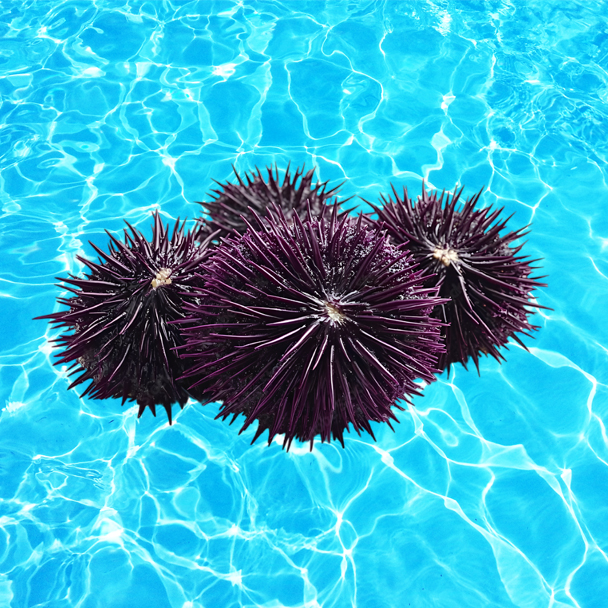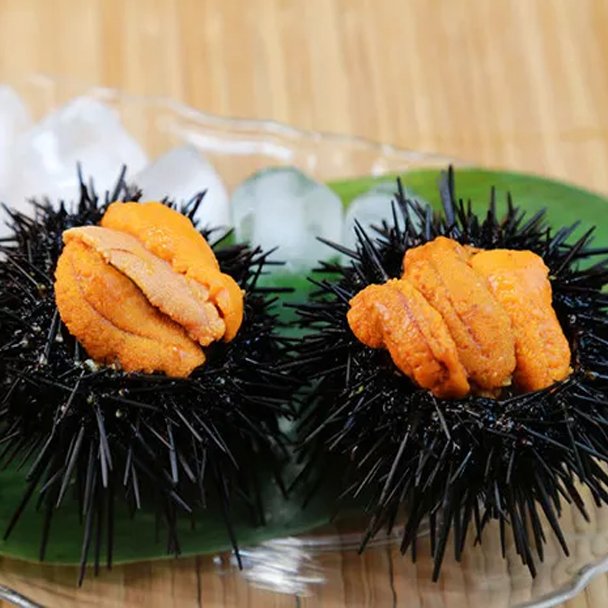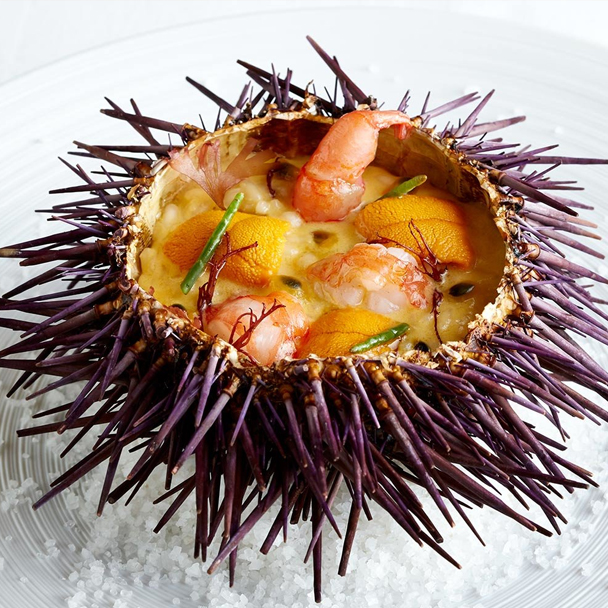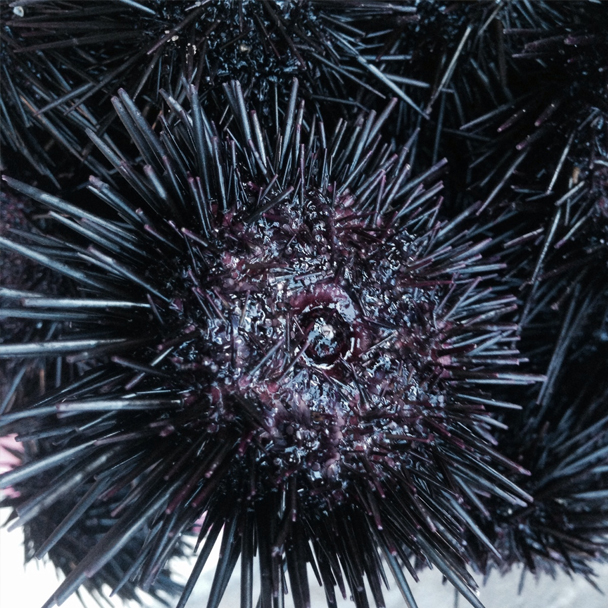








Sea urchins are echinoderms belonging to the class Echinoidea, widely distributed in shallow coastal waters around the world, especially in regions such as Japan, Korea, the Mediterranean, and the North Pacific. Their round shells are covered in sharp spines, giving them a distinctive appearance. Sea urchins typically inhabit rocky crevices or seaweed beds, feeding on algae and microscopic organisms.
Among the many species, the most commonly consumed are purple sea urchins and green sea urchins. The edible part, known as “uni” in Japanese, is actually the gonads of the sea urchin. Uni is golden or orange in color, soft in texture, and melts in the mouth, offering a sweet and rich ocean flavor. It is highly nutritious, packed with high-quality protein, unsaturated fatty acids, vitamins A and B, and minerals like zinc, which help boost immunity and promote overall health.
In Japanese cuisine, sea urchin is considered a luxury ingredient and is commonly used in sushi, sashimi, gunkan-maki (battleship rolls), rice bowls, and steamed egg custard (chawanmushi). Especially fresh uni is a delicacy featured in top-tier sushi restaurants, as it requires careful handling and strict freshness standards.
Due to limited supply and the difficulty of harvesting, high-quality sea urchin is expensive and sought after by gourmet enthusiasts. In recent years, sea urchin aquaculture has been developed to meet market demand while protecting wild populations, supporting sustainability. With its unique texture and exquisite flavor, sea urchin has earned its place as one of the world’s most prized seafood delicacies.
